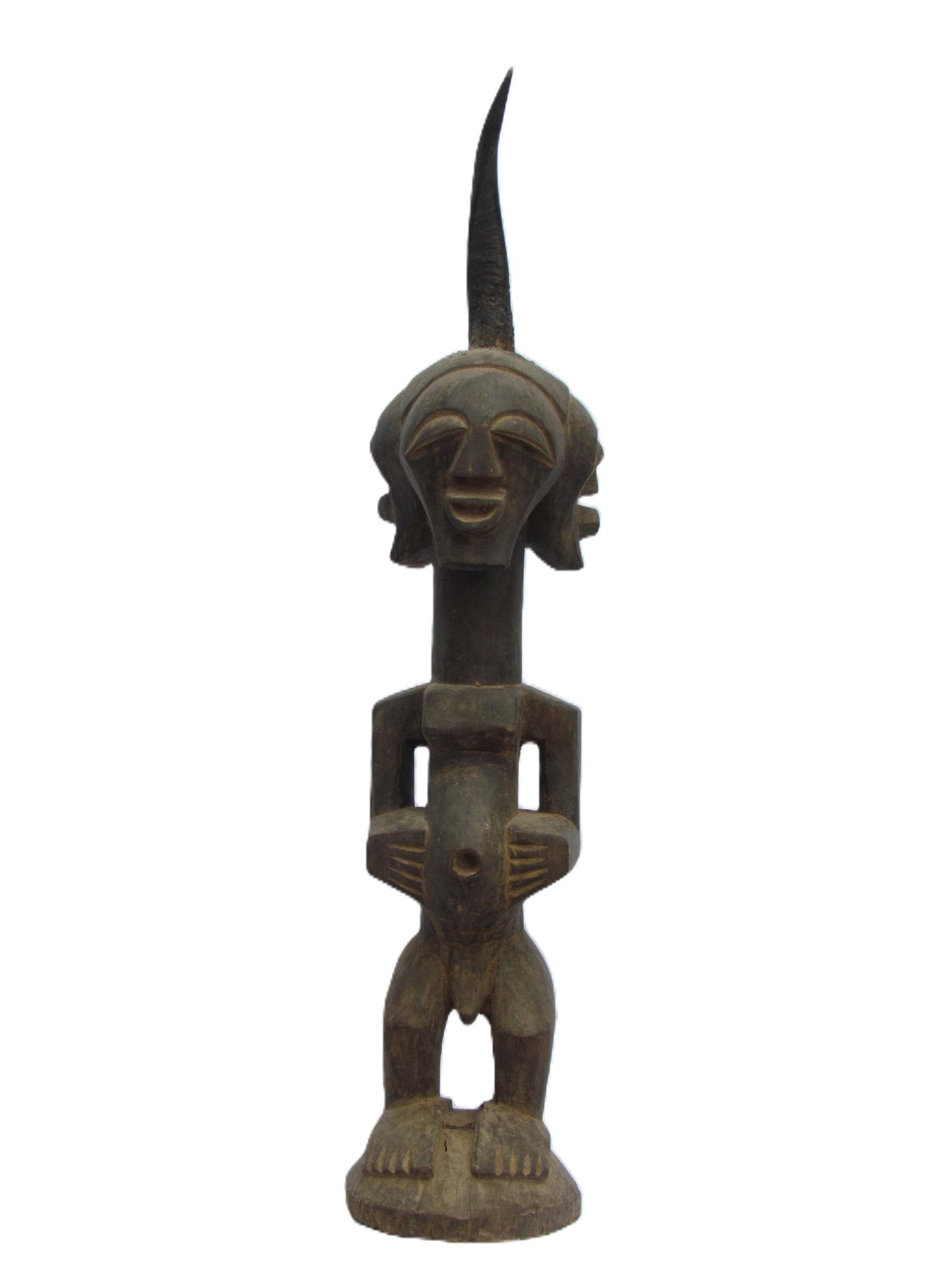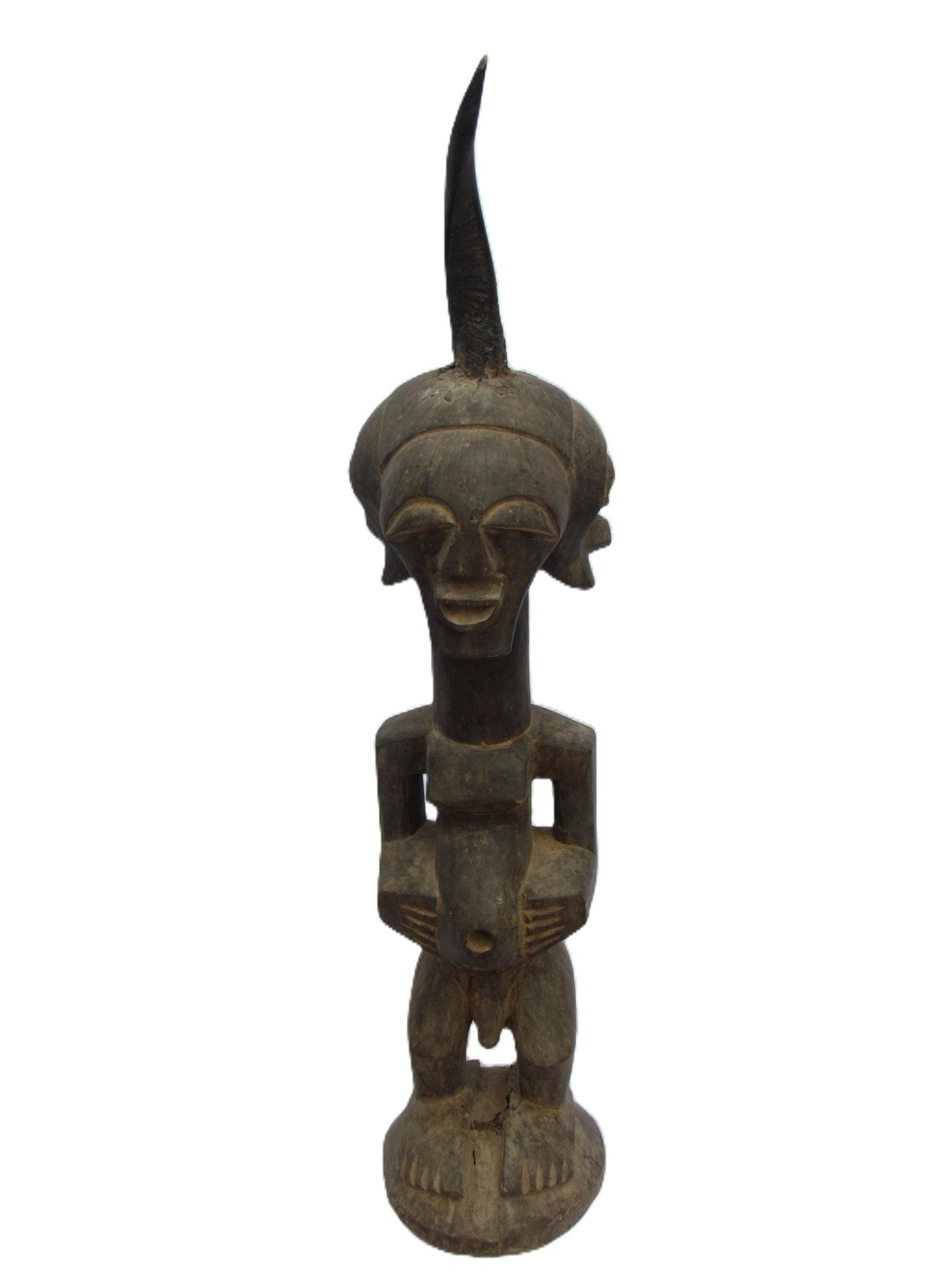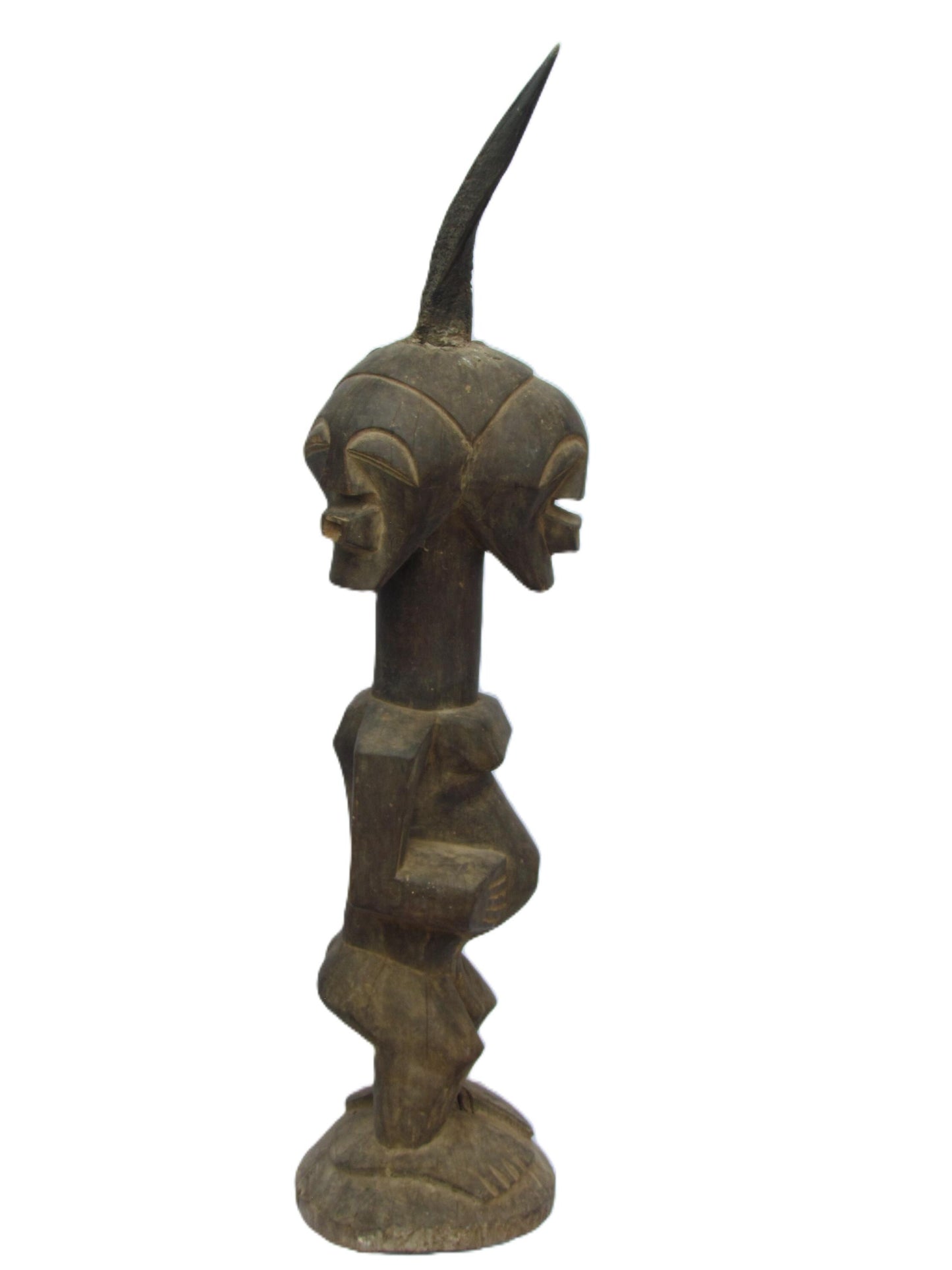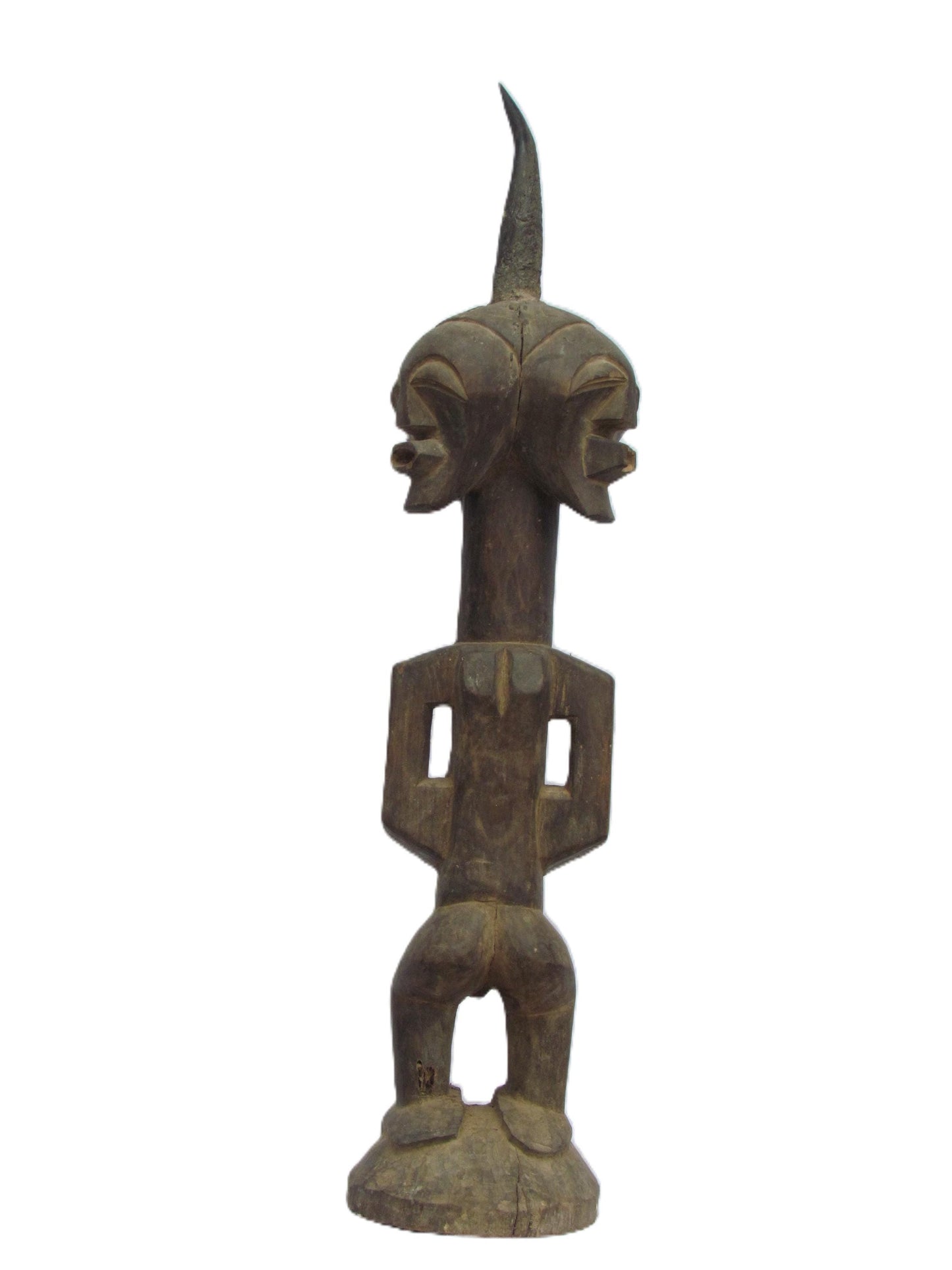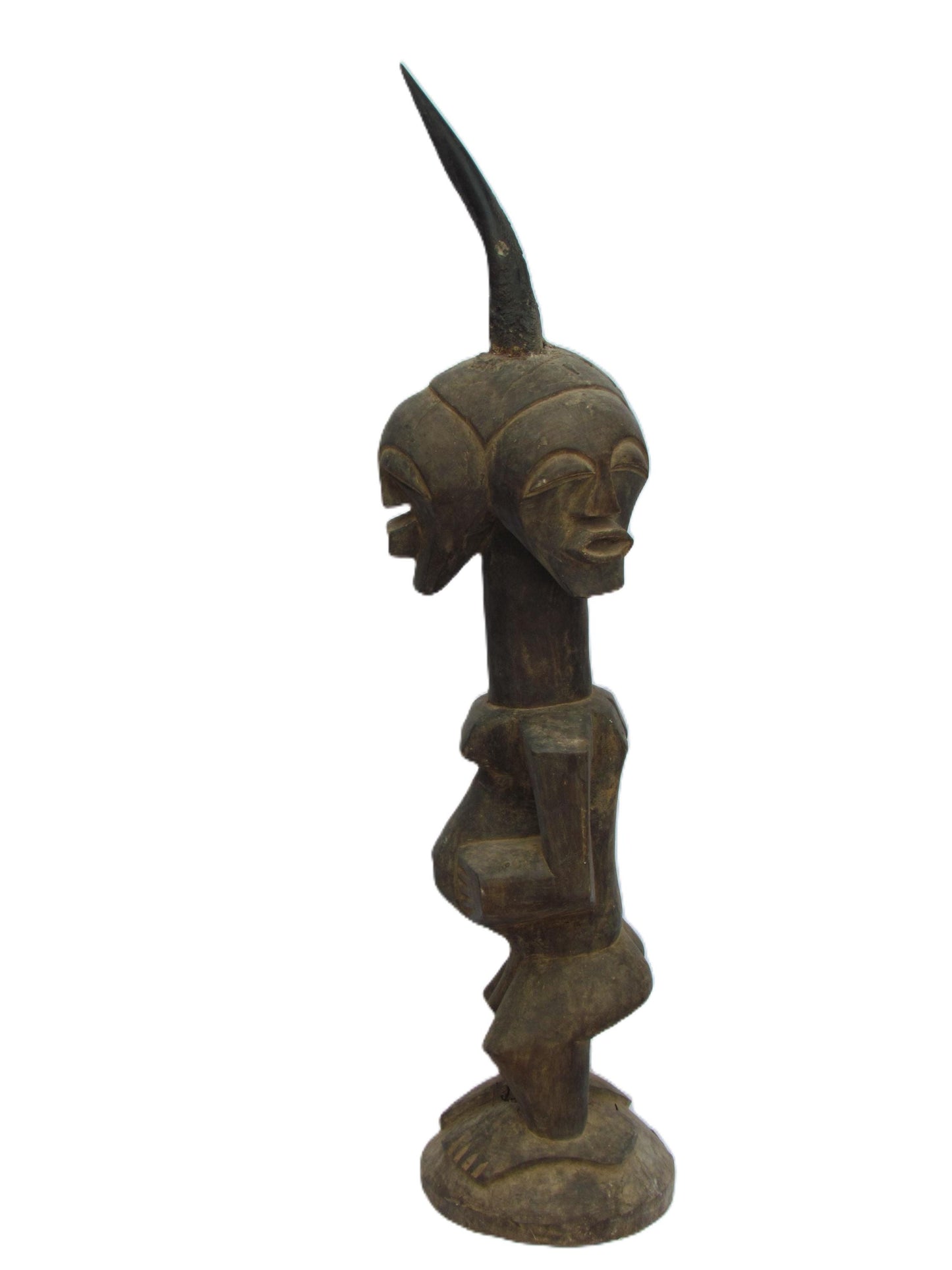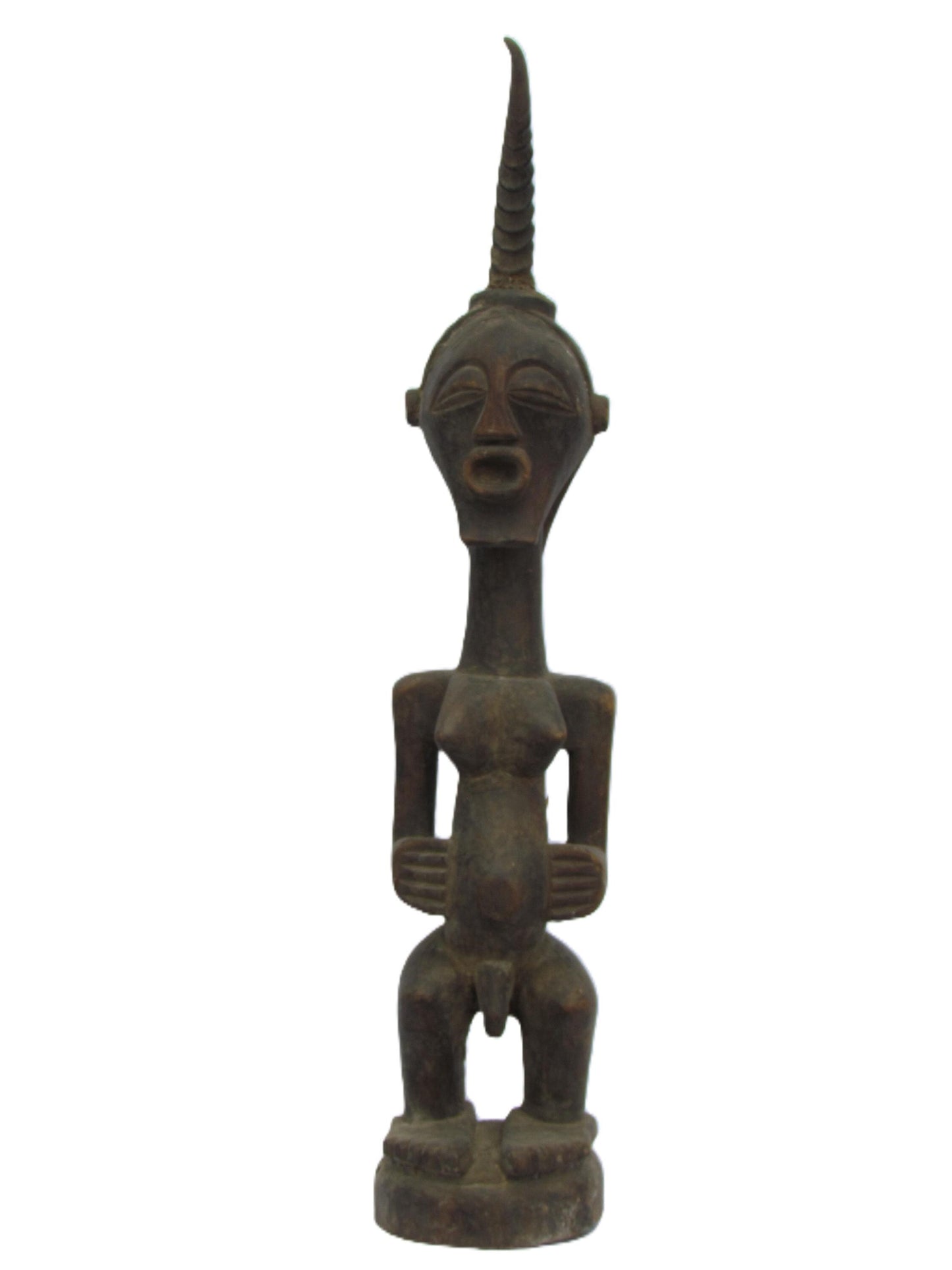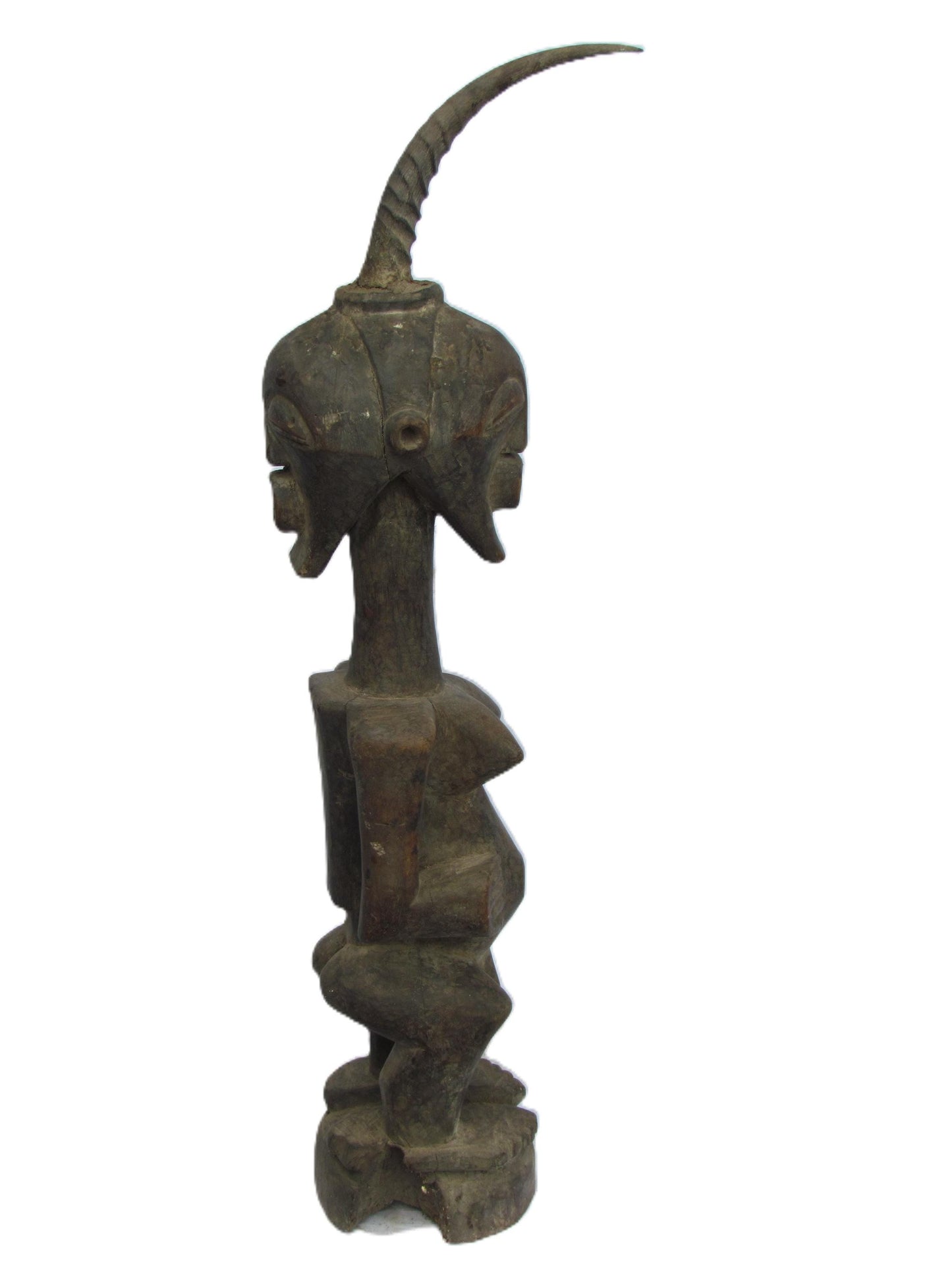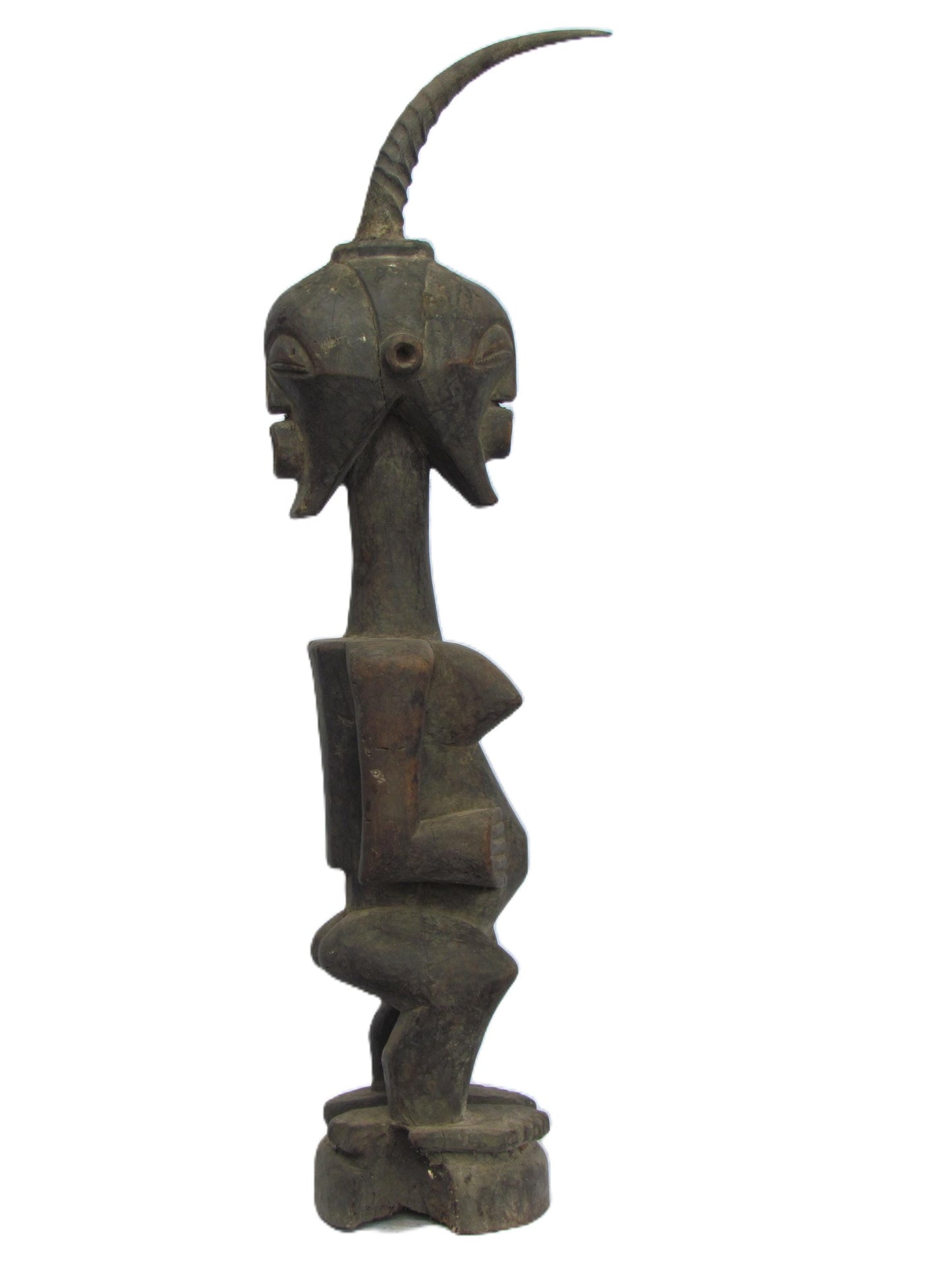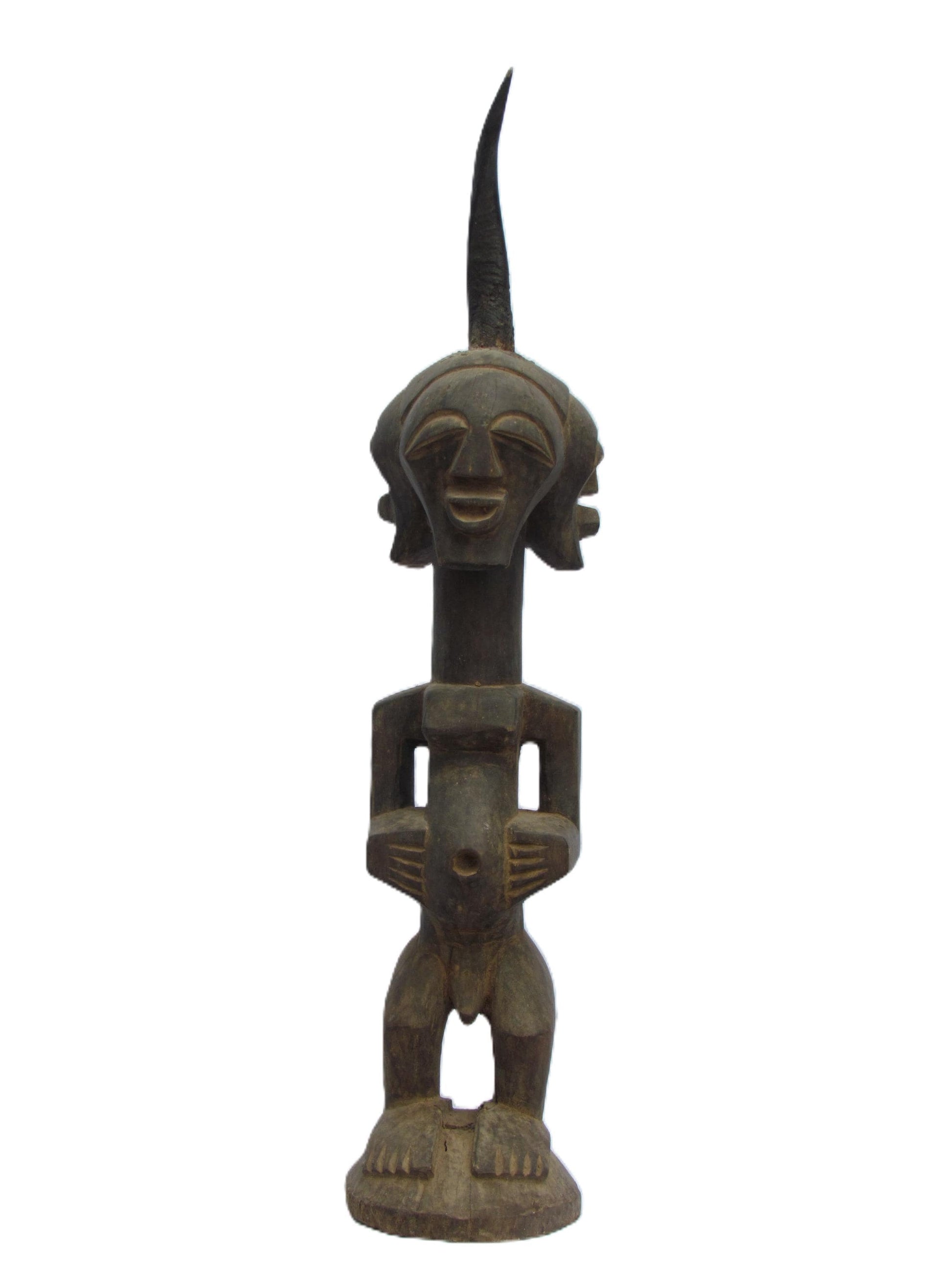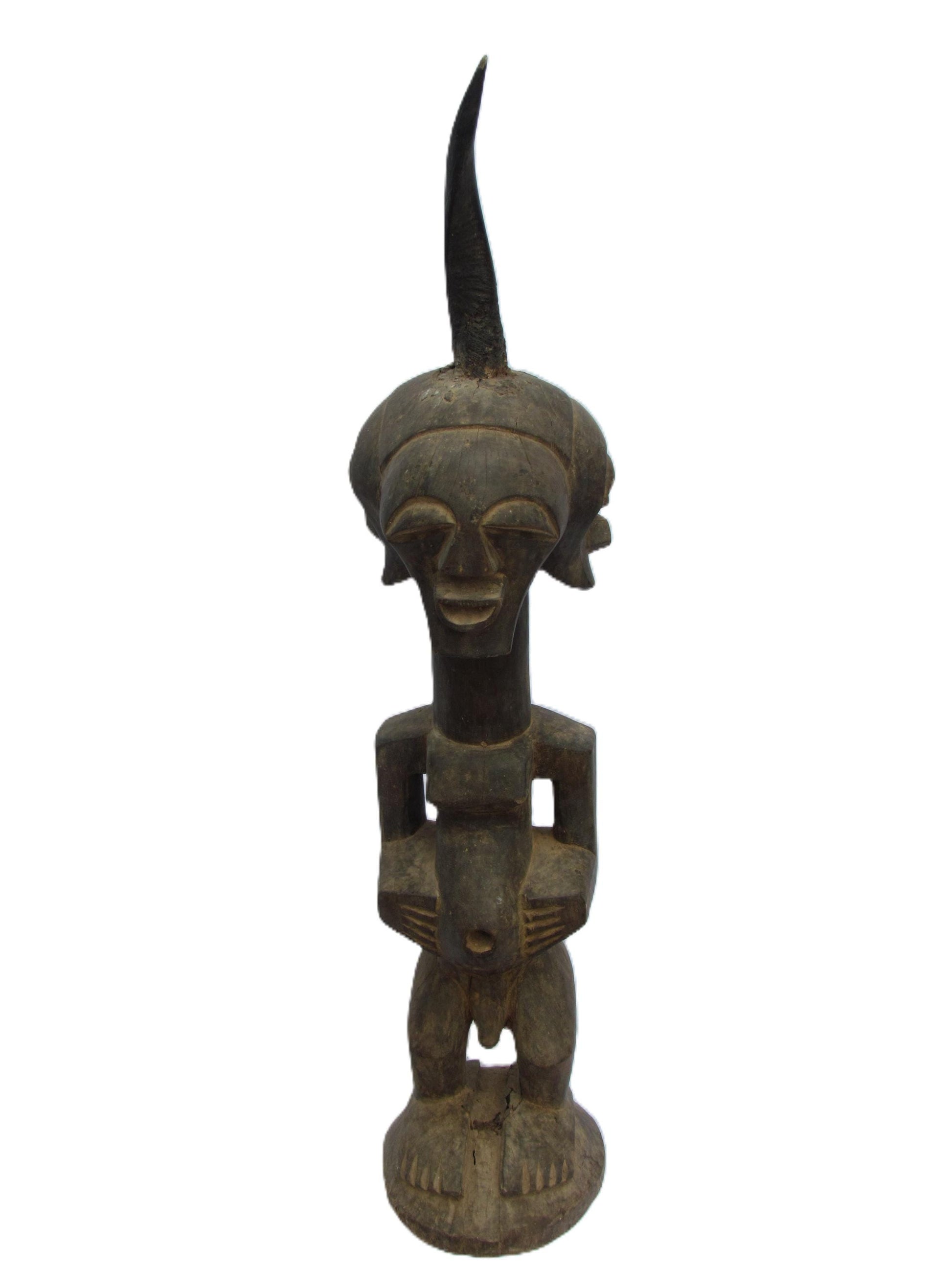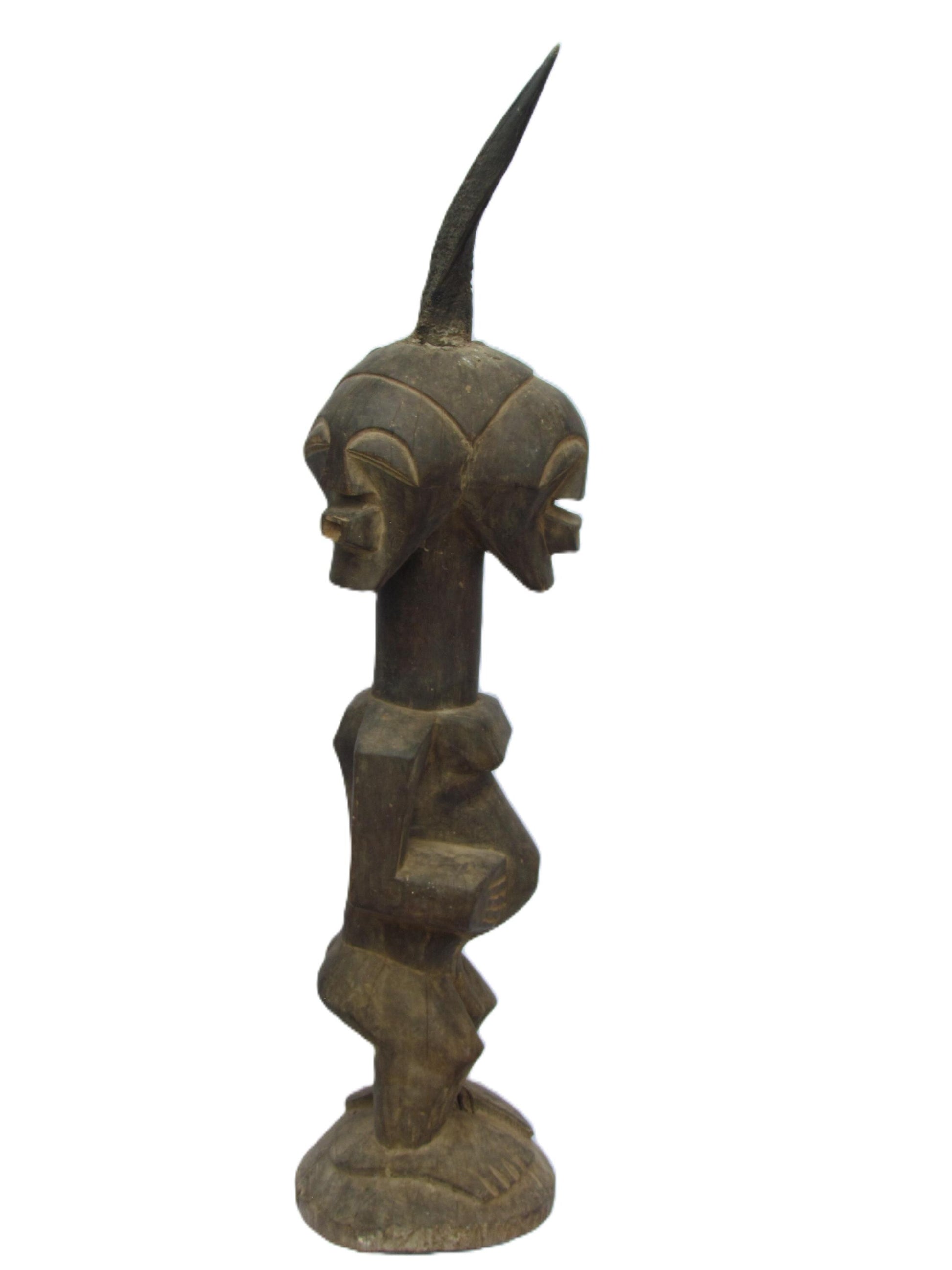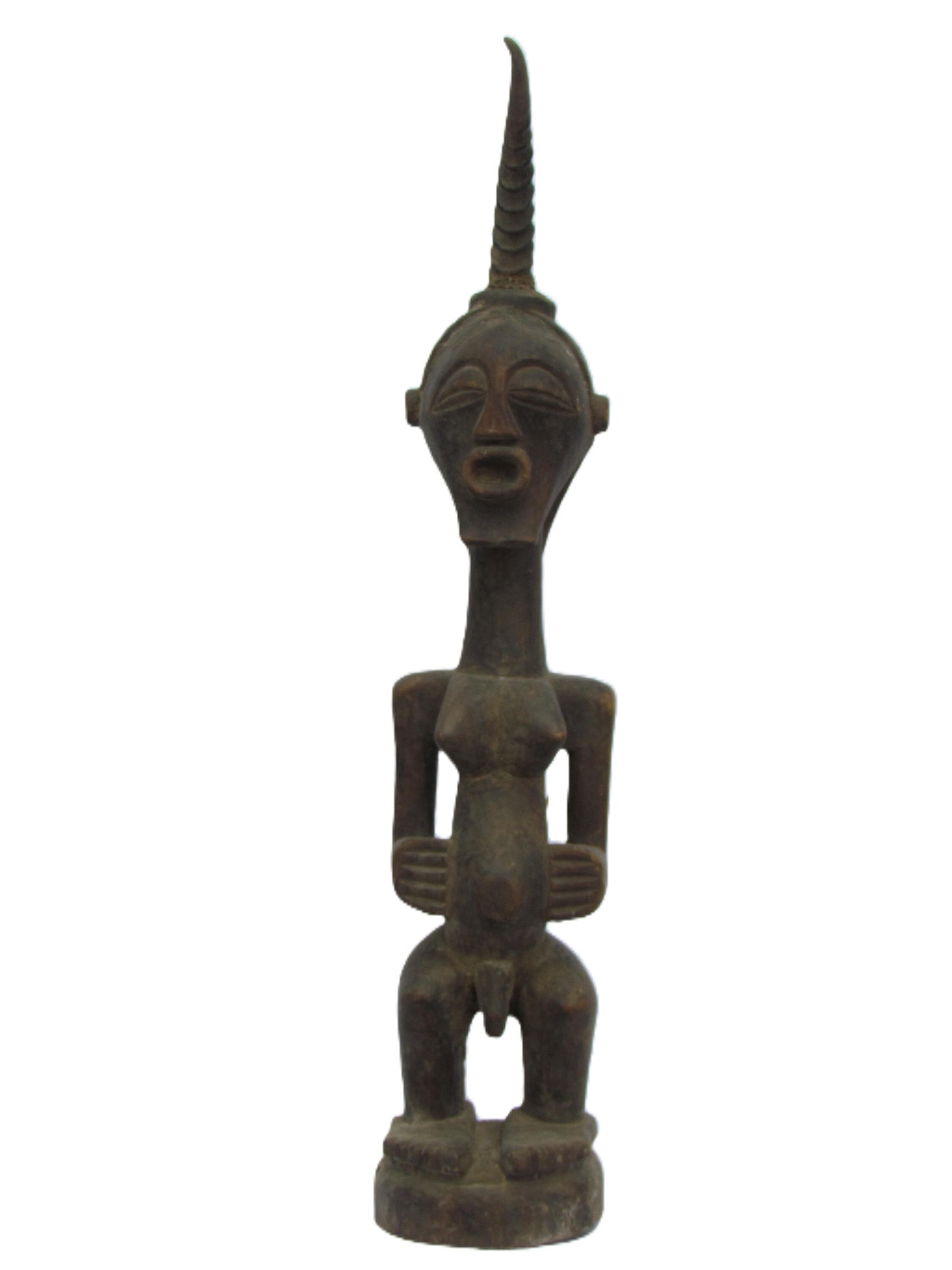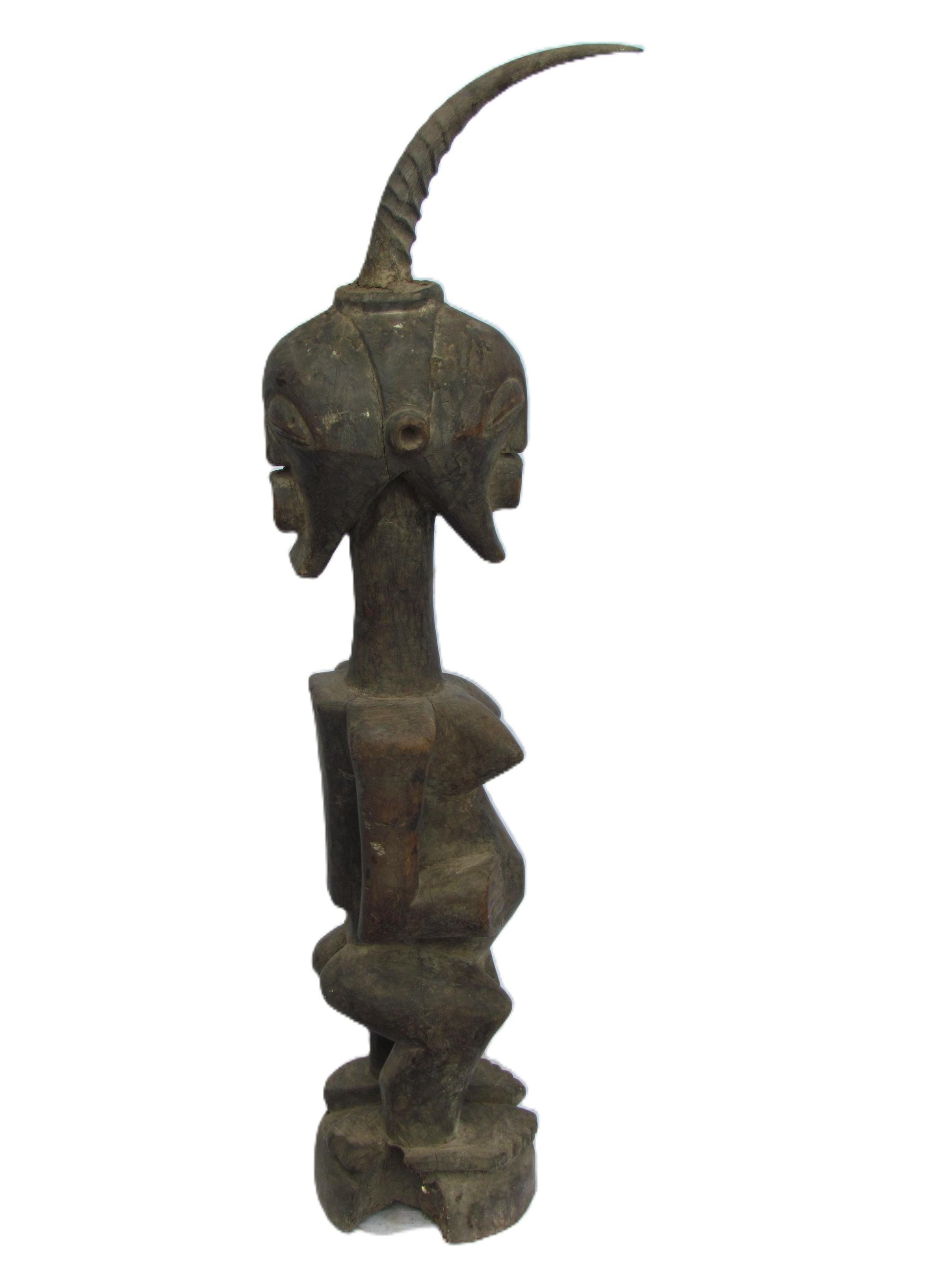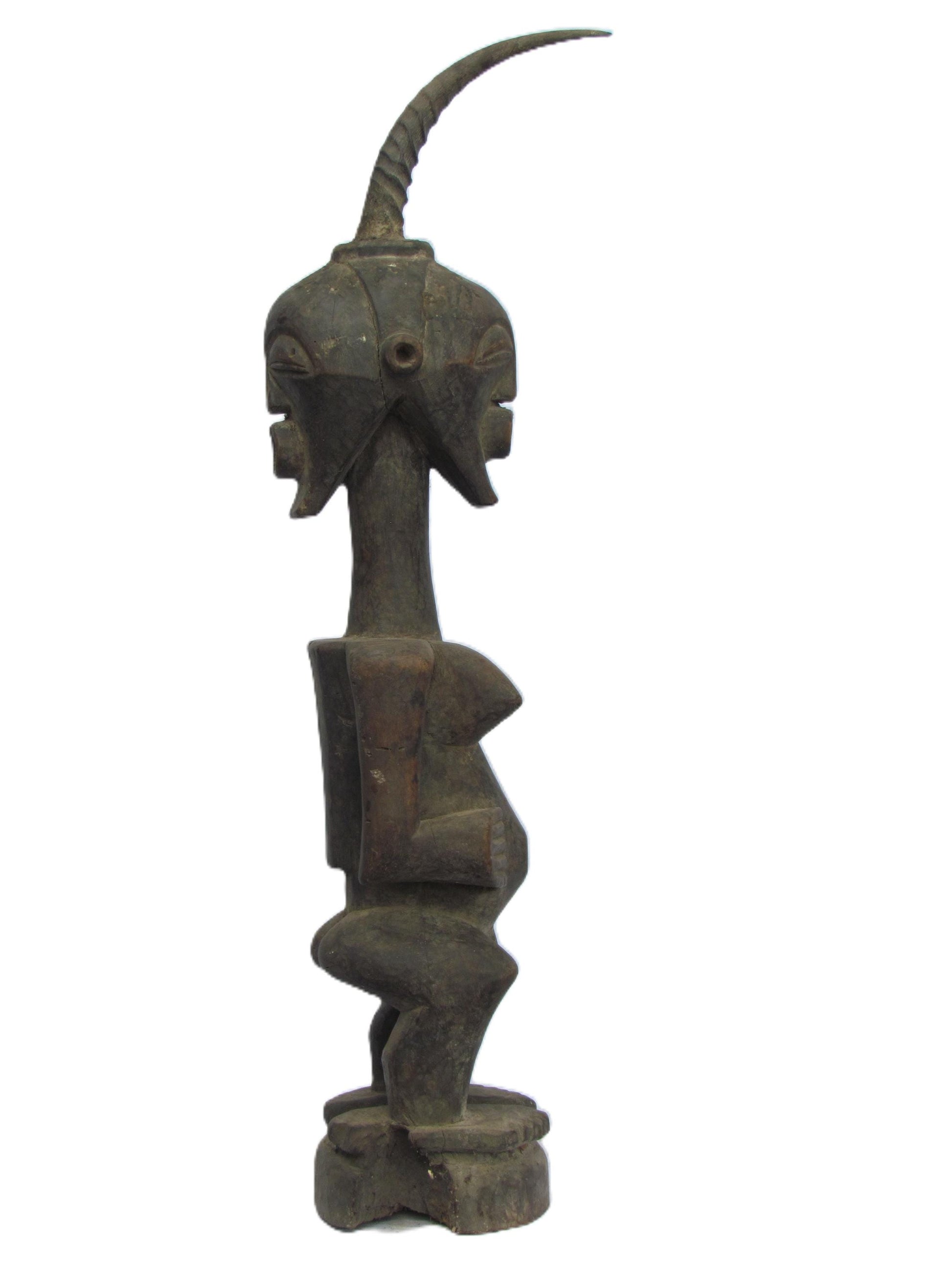1
/
of
10
kivuhome
Brown Songye Male Figure with Four Faces, DRC - African Tribal Art.
Brown Songye Male Figure with Four Faces, DRC - African Tribal Art.
Regular price
$459.14 USD
Regular price
Sale price
$459.14 USD
Unit price
/
per
Couldn't load pickup availability
"This Vintage of a Male Songye has got four faces in four different directions and it is closely linked to the Luba's, to whom they are related through common ancestors. According to tradition, Kongolo, the founder of the first Luba empire in the sixteenth century, was a Songye. Having waged war against one another for a long time, the Songye and Luba later formed an alliance to fight the Arabs. In 1887, in order to prevent annihilation, a Songye subgroup, the Nsapo, moved to Lulua territory and, by virtue of this migration, created an original style of sculpture. The social structure was headed by a chief assisted by innumerable secret societies. Originally, the initiation of young boys took place within the framework of the buhishi institution, but this disappeared at the beginning of the century. The Songye used a large number of fetishes and amulets, called boanga, to ensure their success, fertility, and wealth and to protect them against hostile forces such as lightning, as well as against diseases such as smallpox, very common in that region. The fetishist would make the boanga with magic ingredients which he crumbled and mixed, thus obtaining a paste that was kept in an antelope horn hung from the roof of the house. When the head of a family needed to travel, he had a new one made which he carried with him. Divination allowed the Songye to discover the causes of a misfortune. The diviner, the nganga, would ask questions of the consulting party, who would be holding an instrument the diviner would strike. Besides the amulets, which do not always have a human shape, large figures are found belonging to the fetishist, who would manipulate them with sticks during the ritual of the full moon. These figures adopt a hieratic posture, the hands placed on a pointed abdomen; they have an elongated face with a rounded forehead, large almond-shaped eyes, heavy bulging eyelids, and a bean-shaped mouth; the neck sometimes has rings around it, and the shoulders are square. On top of the head, a horn or feathers reinforce a disquieting appearance. The face is covered with nails, a reminder of smallpox. Bands of copper or brass increase the magic power of the statue, which is dressed in feathers and skins and carries a small bag of potions. The enormous feet are incorporated into the base, an approach one also finds among the Chokwe. Fetishists used statuettes mounted on a pedestal, magic contents attached with a nail to the top of the skull.
"
Share
